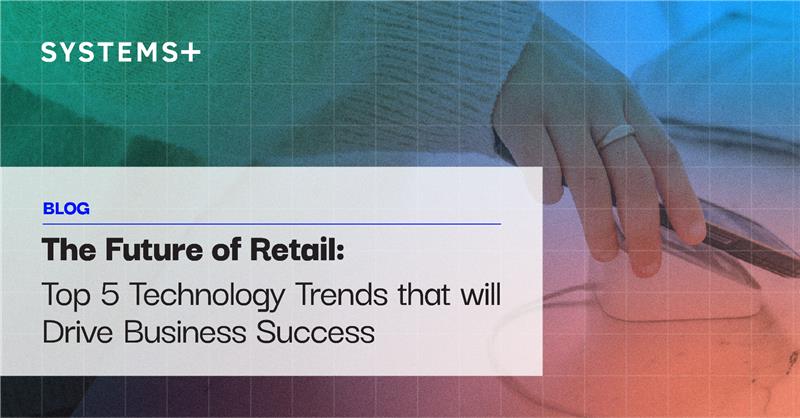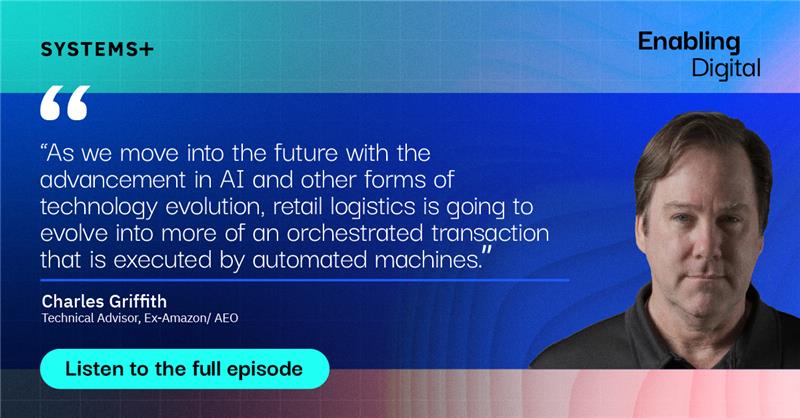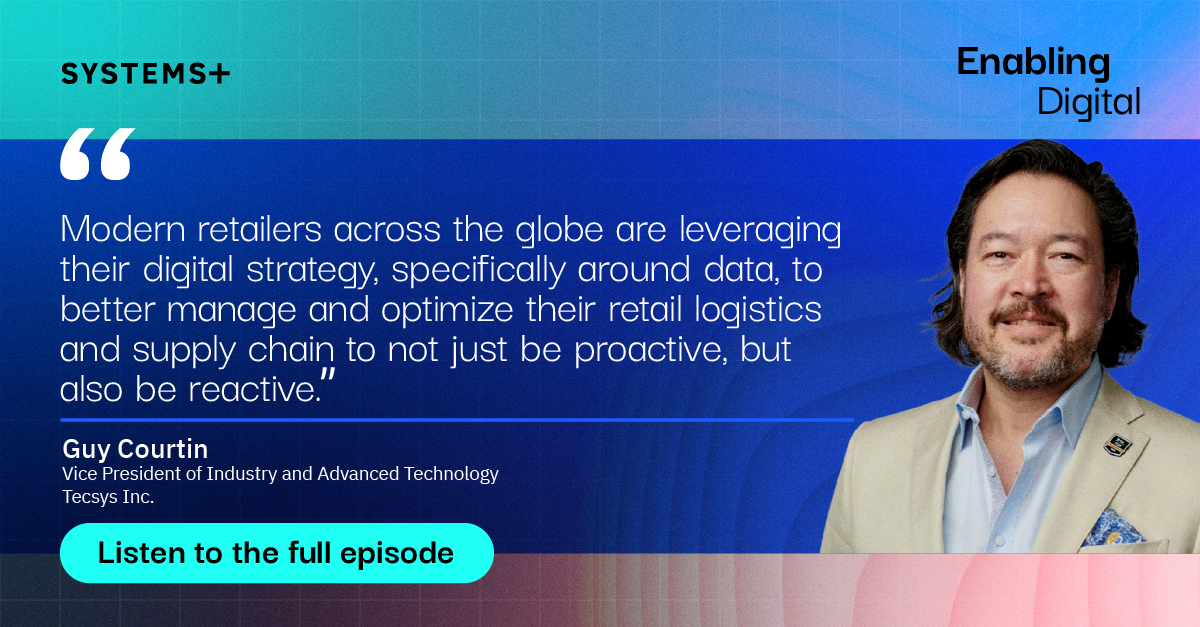The Future of Retail: Top 5 Technology Trends that will Drive Business Success

In today’s digital age, tech-savvy consumers are increasingly leaning towards a personalized blend of digital and physical retail channels to discover, research, negotiate, and purchase the products they desire. Customer loyalty and brand reliability are consciously becoming fluid in nature, which means that shoppers are now willing to dabble across brands to land on their ideal combination of price, delivery speed, and convenience through easily accessible channels.
Staying competitive in this rapidly evolving market requires a forward-looking growth strategy that is backed by robust technology and tools. According to Charles Griffith, a seasoned retail logistics expert who was recently featured in our ‘Enabling Digital’ podcast series, “The retail industry is undergoing a paradigm shift based on the availability and evolution of technology.” So, how can retailers capitalize on this digital wave while delivering seamless customer experiences? Here are five key technology trends that are most likely to drive growth in the retail industry over the coming years.
We asked leading retail experts around the globe about the technologies that retailers should bet on as companies integrate their online and physical stores in the digital era. Here’s what they had to say!
AI and ML technologies have permeated every industry, including the retail sector that has long served as a proving ground for AI solutions. One of the earliest and most well-known applications of AI in retail is Amazon’s recommendation engine, launched over two decades ago. This machine learning algorithm suggests related products to customers based on their past purchases, location, and the buying patterns of similar shoppers. According to McKinsey, 52% of all retail activities can be automated with existing technology. Thus, as the industry evolves, retailers must intensify their focus on AI and ML.

AR and VR technology in retail enhances customer experiences by enabling virtual try-ons, interactive product displays, and immersive store environments. Augmented reality allows shoppers to visualize products in real-world settings, while virtual reality creates fully immersive shopping experiences. These technologies drive engagement, boost sales, and personalize the buyer’s shopping journey.
To adopt AR and VR technology in your retail business, consider investing in user-friendly AR/VR platforms and integrating them with your existing systems for a seamless experience. Train your staff and promote these features to customers, highlighting the next-gen shopping experience and convenience they offer.
Chatbots and virtual shopping assistants in retail provide instant, 24/7 customer support, enhancing the shopping experience with personalized recommendations and quick query resolution. They use AI to guide customers through product selections, handle transactions, and offer tailored promotions.
These digital assistants can also track order status, manage returns, and provide post-purchase support. This technology helps retailers reduce manual overheads by automating routine tasks, freeing up staff to focus on more complex customer needs, boosting overall efficiency.
Data is often fragmented and siloed across various systems in the traditional legacy architecture, which poses a significant hurdle in the overall integration of all retail touchpoints, subsequently limiting scalability. To fully harness the potential of data and accelerate value creation, leading retailers are adopting cloud-based data platforms that support automation through a set of standardized protocols.
Tune in to an insightful episode of our Enabling Digital podcast series to understand how Customer Data Platforms can elevate business growth.

Inducing brand recognition and customer loyalty is rapidly becoming a more challenging feat due to the rising competition in the retail industry. Retailers today not only have to bring customers into their brick-and-mortar stores but also have to offer a compelling online experience for shoppers on their e-commerce websites. The ideal approach to tackle this conundrum is to merge the online and in-store channels to ensure a consistent and seamless experience for the end consumer.
A mobile-first strategy coupled with a robust Order Management System (OMS) is a great way to stride onto the omnichannel bandwagon. Watch this episode of our SME-led TechEnablers series to understand how we upgraded the in-store IT infrastructure for a leading fashion retailer to deliver omnichannel customer experiences.
As the new wave of emerging technologies takes over the retail landscape, capitalizing on this opportunity is crucial to build trust by engaging consumers in ways that strengthen their loyalty. Leveraging the above technology trends can enable significant shifts in costs, optimize shopping experiences, and maximize revenue generation in the long run. Forward-thinking retailers are already investing in these trends to stay ahead of the competition- join the revolution today! Connect with our retail technology experts today to materialize a digital retail strategy that is set up for success.






